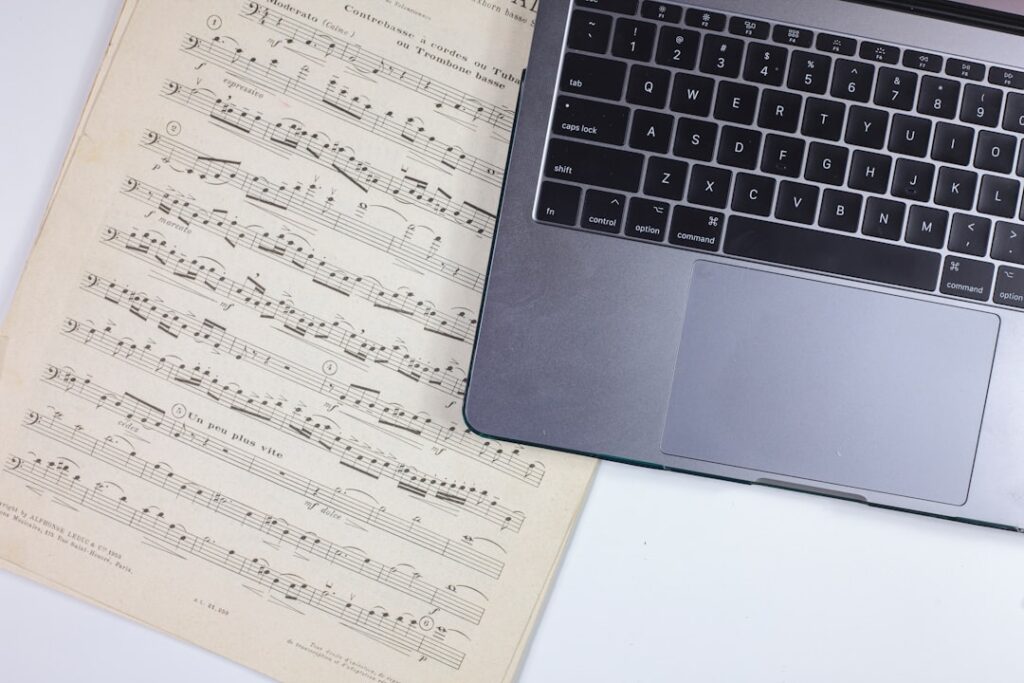
Music theory can feel overwhelming when you first approach it. Scales, intervals, harmony, rhythm, form. Many learners wonder where to begin. Online music theory lessons have changed the learning landscape. They offer structure, flexibility, and expert guidance without the limits of traditional classrooms.
Below you’ll find a detailed guide to what music theory lessons online can offer, how to choose the right course, and how to build steady progress even if you start from zero.
Why Music Theory Lessons Online?
1. Learn at Your Own Pace
Online lessons let you move slowly through tricky topics. You can pause, repeat, and review difficult concepts anytime. No pressure from fast-moving classes.
2. Access High-Quality Teachers
Many platforms feature instructors from major conservatories and universities. You gain expert-level guidance even if you live far from music schools.
3. Structured Curricula
Good online courses follow a clear path. You start with fundamentals — pitch, rhythm, notation — and move step by step into harmony, counterpoint, analysis, and composition. This structure prevents gaps in knowledge.
4. Lower Cost
Online music theory lessons are usually cheaper than in-person private instruction. Some platforms even offer free introductory modules.
5. Ideal for All Skill Levels
Beginners learn notation and basic chord construction. Intermediate players study harmonic function and voice leading. Advanced learners dive into form and analysis. Online platforms handle all levels.
Key Topics Covered in Music Theory Lessons Online
Pitch and Notation
You learn how to read notes, use clefs, and understand accidentals. These basics form the foundation of all music literacy.
Scales and Modes
Most lessons begin with major and minor scales. Later you meet church modes, pentatonic scales, and synthetic scales.
Intervals
You study interval quality and size, ear-training exercises, and how intervals form the building blocks of harmony.
Chords and Harmony
You learn triads, seventh chords, chord progressions, cadences, and harmonic function. Many courses teach Roman numeral analysis early so you can read progressions in any key.
Rhythm and Meter
You work with note values, time signatures, syncopation, and polyrhythms. Good programs include clapping and counting exercises to reinforce timing.
Form and Analysis
You examine binary form, ternary form, theme and variations, sonata form, and more. Analysis helps you understand how real music is constructed.
Ear Training
Many online lessons include exercises for interval recognition, chord identification, and melodic dictation. Ear training strengthens all other music skills.
Recommended Online Platforms for Music Theory Lessons Online
These are reputable platforms with established curricula:
- Berklee Online – Professional certificates and college-level courses.
https://online.berklee.edu/ - Coursera: Fundamentals of Music Theory (University of Edinburgh) – A structured introduction for beginners.
https://www.coursera.org/learn/edinburgh-music-theory - musictheory.net – Free lessons with interactive tools for notation, intervals, and chords.
https://www.musictheory.net/ - Teoria – Clear explanations, exercises, and ear-training tools.
https://www.teoria.com/
All links are active, reliable, and widely used by students.
How to Choose the Right Online Music Theory Course
Match Your Level
Check the course description before enrolling. Many platforms offer placement quizzes to help you begin at the right stage.
Look for Practice Material
Exercises, worksheets, quizzes, and ear-training drills speed up your progress. Passive learning does not work.
Prefer Step-by-Step Curricula
Avoid random YouTube videos without structure. A guided path helps you build a complete understanding.
Ensure Instructor Expertise
Review the teacher’s background. Professional musicians and university-trained instructors usually provide clearer explanations and better exercises.
Check for Community Support
Forums, feedback channels, and student groups keep you motivated and help you solve problems quickly.
How to Succeed in Music Theory Lessons Online
Practice Daily
Ten minutes a day works better than two hours once a week. Repetition strengthens memory.
Write by Hand
Notating chords, intervals, and rhythms on paper improves long-term retention.
Combine Theory with Your Instrument
Apply every concept to real music. Play the intervals you learn. Write small chord progressions. Analyze songs you like.
Use Ear-Training Tools
Apps like Tenuto or Teoria’s drills help you connect theory with listening skills. This combination produces real musical fluency.
Track Your Progress
Keep a theory notebook. Add summaries, examples, and small exercises. You will see improvement within weeks.
Who Benefits Most from Music Theory Lessons Online?
- Beginners who want clear foundations
- Intermediate players stuck on harmony or analysis
- Songwriters and composers who need a technical toolkit
- Classical, jazz, and pop musicians preparing for auditions
- Teachers seeking fresh resources
- Adult learners returning to music after a long break
Online lessons adapt to all learning styles.
Final Thoughts
Online music theory lessons offer a flexible, affordable, and structured way to master the language of music. With the right platform and steady practice, you can understand harmony, read complex scores, and compose with confidence.
Keep Learning with MusePrep
Want to hear what perfect intervals sound like?
Watch our short video lessons on the MusePrep YouTube Channel—ideal for beginners learning ear training and harmony.
Subscribe now to build your ear and master the building blocks of music theory!
Subscribe to MusePrep.
Related Posts:
What Is a Melody? How Notes Become Music.
What Is a Chord in Music? The Building Blocks of Harmony
What Is Timbre in Music? The Color of Sound
What Is a Motif in Music? The Small Idea That Builds a Symphony
Perfect Intervals Explained: The Foundation of Pure Sound in Music.
Perfect Intervals Explained: The Pure Sounds That Shape Music
What Is an Interval? Understanding the Distance Between Notes
What Is a Scale in Music? The Building Blocks of Melody.
Musical Intervals Explained: What Prime, Second, and Third Really Mean
Master the Major Scale: The Simple Pattern Behind Every Great Song
Leave a Reply